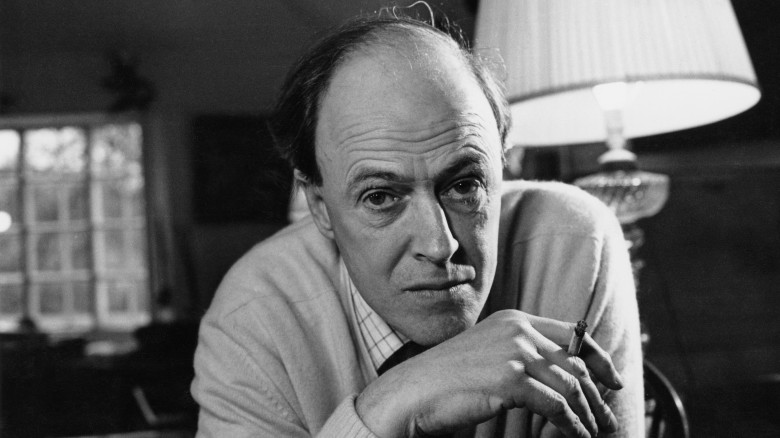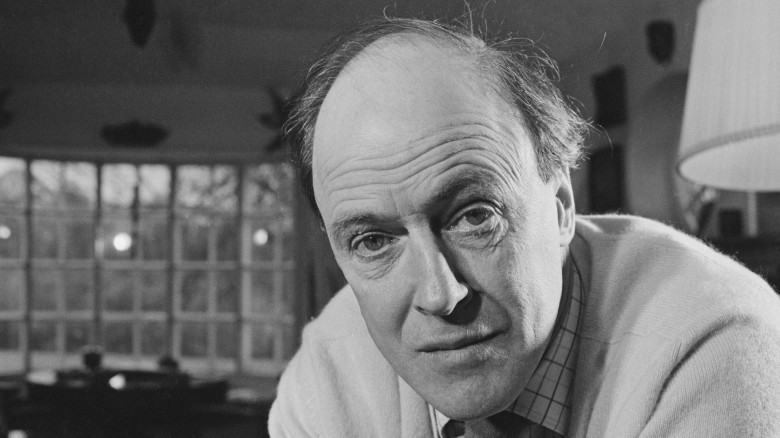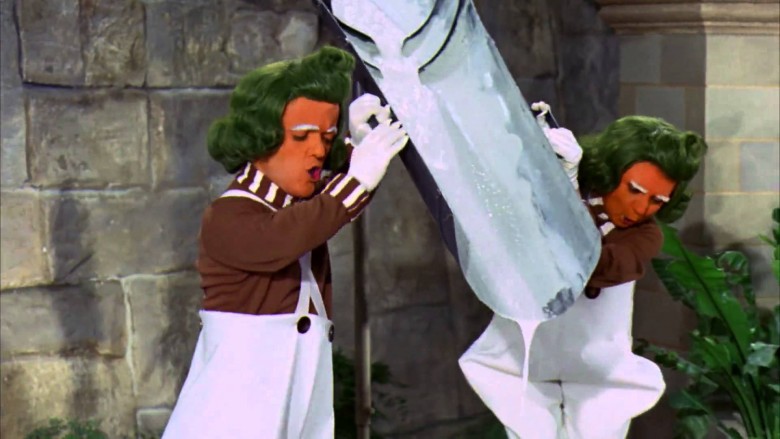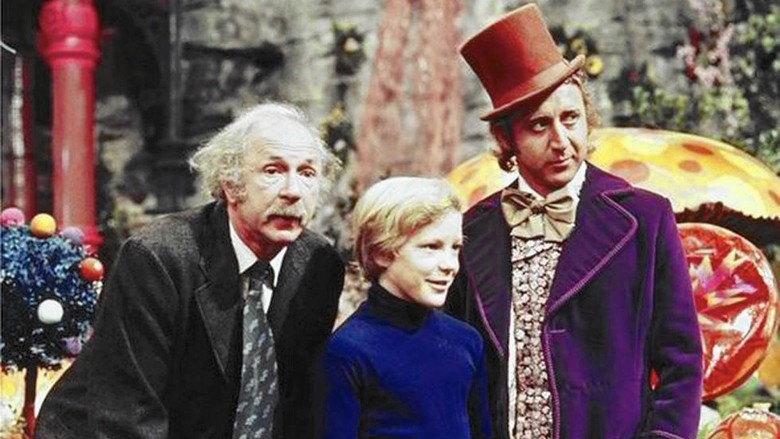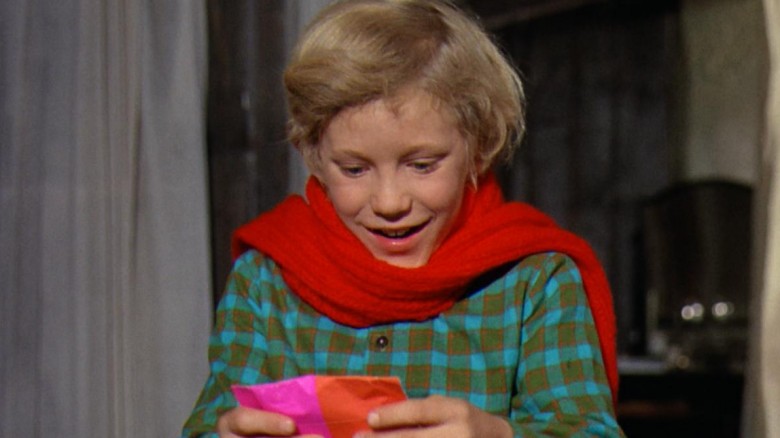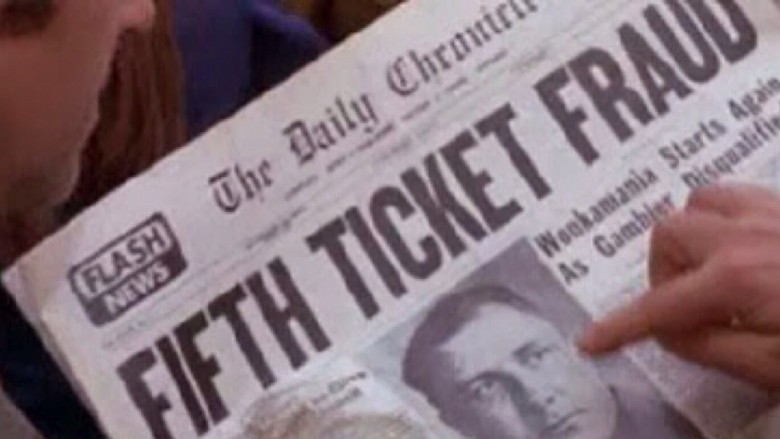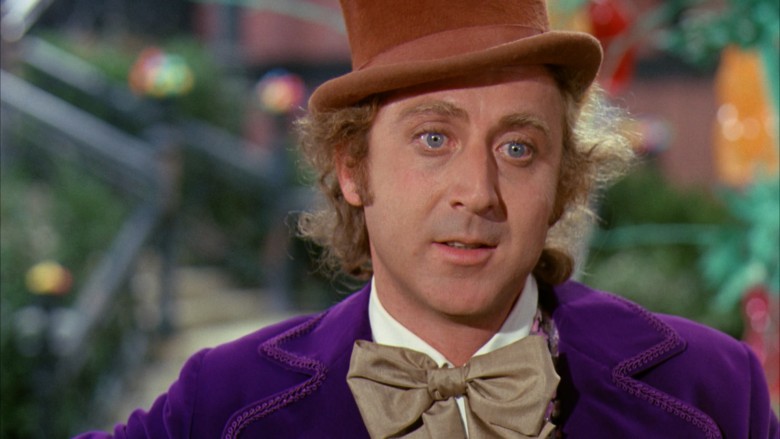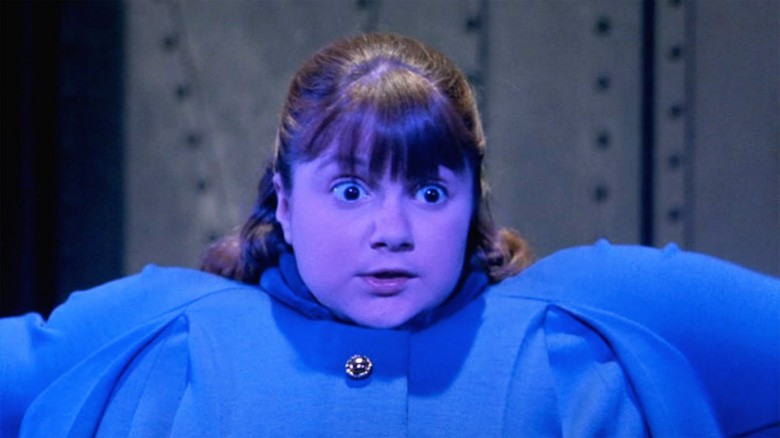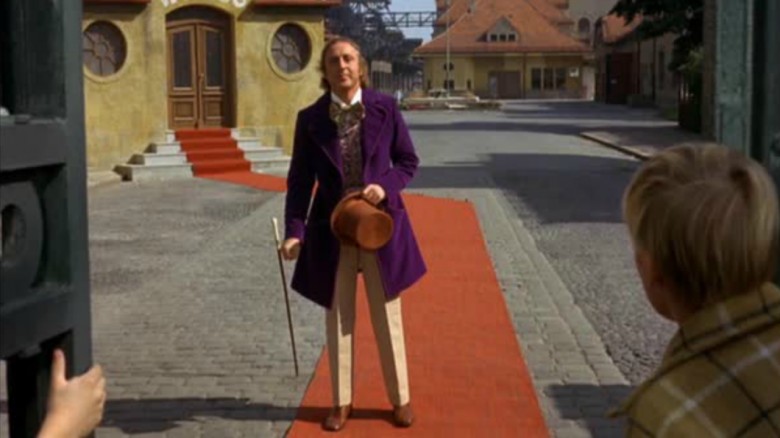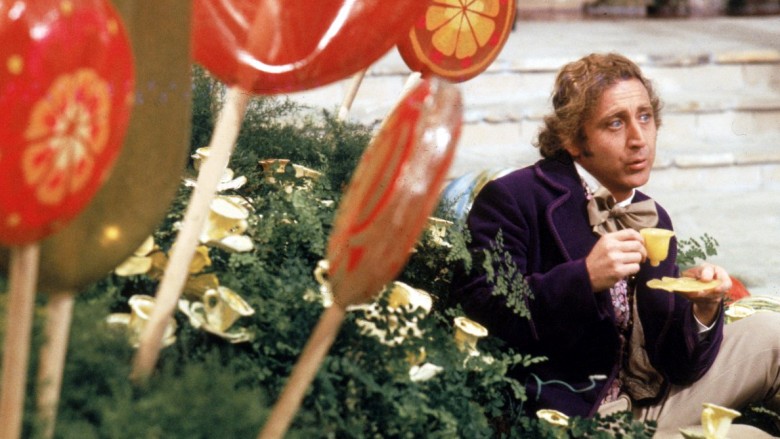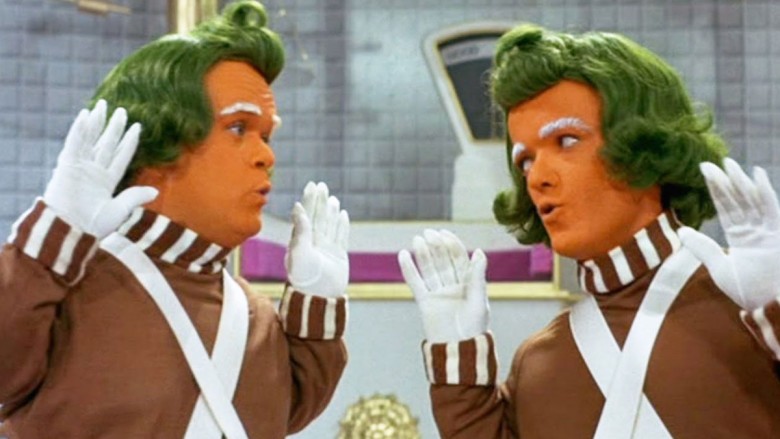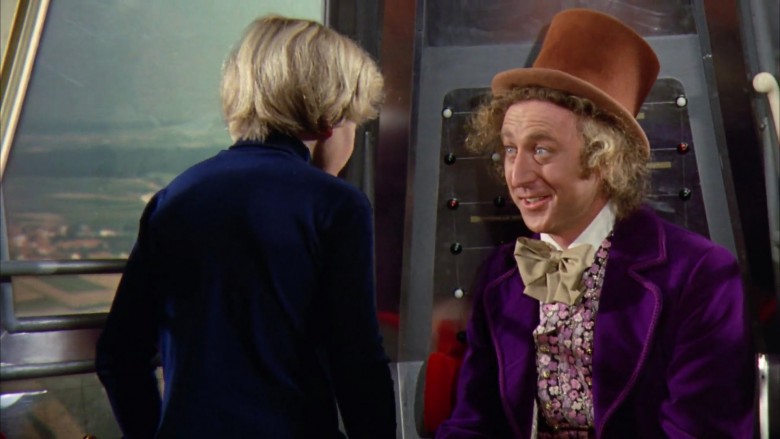The Untold Truth Of Willy Wonka
Willy Wonka and his chocolate factory hold a special place in generations of readers' and filmgoers' hearts. While his methods of ferreting out undeserving children were unorthodox to say the least, the character was still a colorful source of wonderment and delight—from his decadent devotion to sweets to his imaginative approach to candy, he was gobsmackingly (or should we say, gobstoppingly) fascinating. But as entertaining as the Wonka saga might be, there's a behind-the-scenes story that's every bit as captivating. Here's the untold truth of the Willy Wonka books and films.
Authorial inspiration
Author Roald Dahl had a whole chocolate river's worth of real-life inspiration for his 1964 children's classic Charlie and the Chocolate Factory. When Dahl was just a schoolboy himself, much like little Charlie Bucket and his band of fellow Golden Ticket-holders, he was invited to serve as a taste tester for Cadbury and got to try out their newest chocolate concoctions to offer feedback to the company. This set Dahl's imagination alight as to how exactly the company invented all these various new treats, and he later said he pictured the factory has having "an inventing room, a secret place where fully-grown men in white overalls spent all their time playing around with sticky boiling messes, sugar and chocs, and mixing them up to invent something new and fantastic." That description sounds a lot like the inventing room at Wonka's factory.
It wasn't just Dahl's own personal experiences that would inform his narrative, though. The idea for Slugworth, the Everlasting Gobstopper-thieving spy, was a reflection of the very real practice of espionage being waged between competing chocolatiers at the time, especially between Cadbury and Rowntree. That fear of deception and theft, of course, would inspire Wonka's own seclusion and reliance on the Oompa Loompas (who were originally called Whipple-Scrumpets in early drafts of Dahl's book) to guard his treasure trove of yummies.
Charlie's Chocolate Boy
A notorious perfectionist, Dahl went through several drafts of Charlie and the Chocolate Factory before he landed on a manuscript to send to publishers. In fact, in a 1961 version which would've been called Charlie's Chocolate Boy, the story would've involved twice as many Golden Tickets (and thus, children) and some other locations within the factory for their bad behaviors to doom them. One of the characters who got snipped from the story was Miranda Grope (in another draft, named Miranda Mary Parker), a naughty girl who fell into the chocolate river like Augustus Gloop and got sent into the peanut brittle mixer. Her story, a chapter called "Spotty Powder," has since been unearthed online. Also missing were Tommy Troutbeck and Wilbur Rice and their misadventures in the Vanilla Fudge Room—as well as Clarence Crump, Bertie Upside, and Terence Roper, who got a little greedy with their candy consumption and paid the price.
Political incorrectness
There's a reason—or maybe two reasons—why the title of the story and other elements were changed in the process of adapting the tale for the screen. Charlie and the Chocolate Factory was called out for being racially insensitive by the National Association for the Advancement of Colored People (NAACP), which took issue with the written characterization of the Oompa Loompas as African pygmies which hailed "from the very deepest and darkest part of the jungle where no white man had ever been before." The group demanded that the film change the Oompa Loompas and even reportedly took issue with the title because "'Charlie' [was] a black label used for white men [and] its association with chocolate touched off the protests."
The pressure ultimately worked, as the Oompa Loompas appeared onscreen as little orange men with green hair. Meanwhile, the film was released as Willy Wonka and the Chocolate Factory. While others theorize that Quaker Oats, which helped finance the film and produced Willy Wonka-branded chocolates, simply wanted to promote his alliterative and catchy name as their new brand, it's still widely believed that the NAACP's public pressure had a lot to do with the reworking of the title.
Charlie in the White House
Speaking of troublesome titles, there was supposed to be a third installment to Dahl's Wonka book series called Charlie in the White House. The unfinished manuscript for his follow-up to Charlie and the Glass Elevator was expected to follow Charlie Bucket as he headed into Washington D.C.'s political arena. The book was begun in 1978 during Jimmy Carter's presidential term, and would've included Dahl's increasingly snarky political commentary. Although the contents of the book will always remain unknown, as he died without completing it, this segment of "The Nurse's Song" is probably a pretty good indicator of the attitude that would've been revealed in book three: "Let's learn and note the art of politics. Let's teach you how to miss the boat and how to drop some bricks. And how to win the people's votes and lots of other tricks. Let's learn to make a speech a day upon the TV screen, in which you never say exactly what you mean."
Familial nudge
Although Dahl's story was charming and descriptive enough to warrant a cinematic adaptation all its own, director Mel Stuart was coaxed into helping the project by his pre-teen daughter Madeline Stuart, a big fan of the book. The director once deferred all the credit for the movie to his daughter, saying, "If you want to credit anyone for the creation of Willy Wonka and the Chocolate Factory, credit my daughter, Madeline. It was sometime in the fall of 1969 when my precocious 12-year-old daughter came up to me, clutching a copy of Roald Dahl's book Charlie and the Chocolate Factory. 'Daddy,' she said, 'I want you to make this into a movie and have Uncle Dave sell it.” She was paid a $50 referral fee and earned a classroom scene cameo in the movie as remuneration for her suggestion.
Nazi jokes
The political ramifications of Wonka's story were supple enough without the director throwing in Nazis, but it still happened. In the film scene when the newspapers announce the falsification of a Golden Ticket, the perp in question who was pictured was none other than real-life Nazi Martin Bormann. Stuart later regretted his decision to include the reference, but not for the reason you might expect—he reportedly said, "When the South American newscaster holds up the photo of the fifth Golden Ticket winner—who we know is a fake—it's a picture of Martin Bormann. The joke was that Bormann was Hitler's right-hand man and Bormann, in theory, escaped and wound up in Paraguay. But people don't know who Martin Bormann was and that was my mistake."
Penis puns
Ask anyone where the phrase "the snozzberries taste like snozzberries" came from, and they'll probably conjure up an immediate mental image of the wallpaper-licking scene in Willy Wonka and the Chocolate Factory when Veruca Salt reports her astute findings. But that may have been an undercover filthy moment. As pointed out by Syfy, the term snozzberry first appeared in Dahl's lexicon in a book called My Uncle Oswald, which used the phrase to describe a character's...man parts. The line was, "There's only one way when they get violent. I grabbed hold of his snozzberry and hung onto it like grim death and gave it a twist or two to make him hold still." That bit of context makes a little girl tasting the flavor pretty R-rated all of a sudden, doesn't it?
Child torments
The making of Willy Wonka and the Chocolate Factory was filled with intriguing set stories, one of which was how much all that child-torturing took a toll on its young cast. The girl who played Violet Beauregarde, Denise Nickerson, revealed that all her gum-chewing for the film caused her 13 cavities and that she had blue food dye coming out of her pores for days after her scenes were finished. Meanwhile Julie Dawn Cole suffered a knee injury while pounding her chocolate sphere on a rock—and she reportedly still has that scar to this day (and she hated all the chocolate she was forced to down for the shoot). There's also the moment when the Candy Man slammed a bar arm into a girl's face during a scene which still made the cut, and a lot of the kids were actually terrified during that psychedelic boat ride through the tunnel: they weren't prepared for what to expect during many scenes, so as to draw out genuine reactions from the little actors.
Stumbling condition
Roald Dahl dreamed up an incredible Wonka world, but his ideas weren't the only ones seen onscreen. Gene Wilder, who arguably accepted the role of a lifetime by playing Wonka, revealed that he told director Stuart, "When I make my first entrance I'd like to come out of the door carrying a cane and then walk toward the crowd with a limp. After the crowd sees Willy Wonka is a cripple, they all whisper to themselves and become deathly quiet. As I walk toward them, my cane sinks into one of the cobblestones I'm walking on and stands straight up, by itself; but I keep on walking until I realize that I no longer have my cane. I start to fall forward and just before I hit the ground, I do a beautiful forward somersault and bounce back up, to great applause." The scene was important to him, he said, because "from that time on, no one will know if I'm lying or telling the truth."
Fake foods
Paris Themmen, who played the television-obsessed Mike Teevee, revealed in a Reddit AMA that the chocolate river that claimed Augustus Goop in the Chocolate Room wasn't quite as delicious as the movie made it seem. "The river was made of water with food coloring," explained Themmen. "At one point, they poured some cocoa powder into it to try and thicken it but it didn't really work. Michael Bollner, who played Augustus Gloop, answers, 'It vas dirty, stinking vater.'" It's hard to imagine who had it worse: young Michael, who had to wade in the smelly water, or Gene Wilder, who had to use his "pure imagination" to pretend those wax buttercups were actually tasty.
Pure pranksters
You might imagine that in a movie with just as many child cast members as adults, it would be the minors who got into the most mischief, but that wasn't the case with Willy Wonka and the Chocolate Factory. According to Themmen's Reddit AMA, "The Oompa Loomps were notoriously mischievous. They were often drunk after a day's shooting. We all stayed in a hotel together. In those days, when you wanted to have your shoes shined, you'd leave them outside your hotel room door. One night the Oompa Loompas grabbed all the shoes, tied the laces together, and left them in a pile to be found in the morning."
Pulling the plug
As beloved as Willy Wonka and the Chocolate Factory might still be to audiences across the world, there was one VIP unimpressed with what he saw onscreen: Roald Dahl himself. Donald Sturrock, Dahl's friend and biographer, told Yahoo! that the author was particularly unhappy with Wilder as Wonka. "His ideal casting was [surreal English comedian] Spike Milligan and he said Milligan was really up for doing it. He even shaved his beard off to do a screen test. ... I think he felt Wonka was a very British eccentric. Gene Wilder was rather too soft and didn't have a sufficient edge. His voice is very light and he's got that rather cherubic, sweet face. I think [Roald] felt...there was something wrong with [Wonka's] soul in the movie—it just wasn't how he imagined the lines being spoken."
It wasn't just Wilder who turned the author off of the adaptation. Sturrock added, "He didn't like Mel Stuart at all and Mel Stuart didn't like him." Dahl also reportedly took issue with the fact that the film's songs were a little too sweet; overall, "he found it too sappy and sentimental." He reportedly hated it all so much that he refused to allow the sequel to be made into a movie, and his estate only allowed Tim Burton's 2005 adaptation Charlie and the Chocolate Factory to happen after the author passed away.

